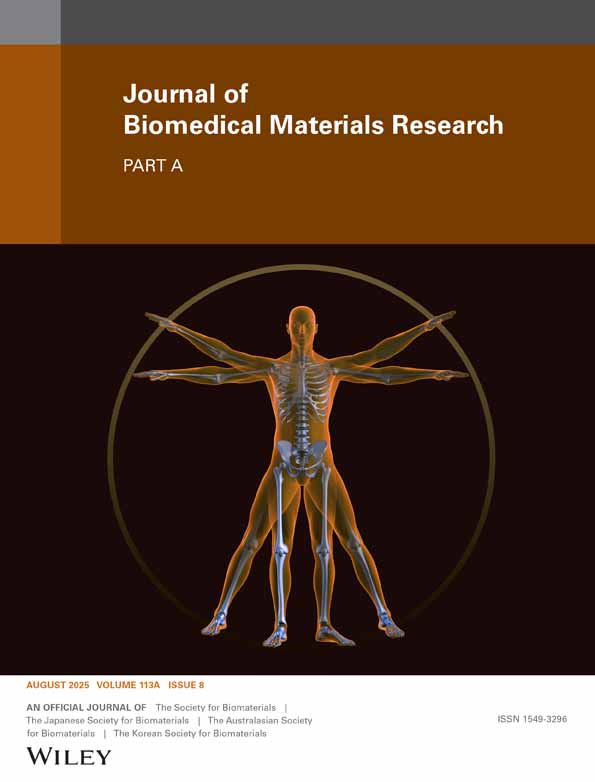Controlling osteopontin orientation on surfaces to modulate endothelial cell adhesion
Abstract
Osteopontin (OPN) is an important extracellular matrix protein that has been shown to impact wound healing, inflammation, and the foreign body reaction, and has been identified as a potential surface component for engineered biomaterials. OPN contains the arginine-glycine-aspartic acid (RGD) moiety that has been shown to mediate cell adhesion through interactions with integrins. In its preferred orientation and conformation on a surface, the functional domains of OPN will be presented to cells to the greatest extent. However, control of protein orientation and conformation is still challenging. In this work, we investigated OPN adsorption and cell adhesion to the OPN layer on self-assembled monolayers (SAMs) of alkanethiols terminated with various functional groups and on a gold surface. The four SAM terminal groups studied were CH3, OH, NH2, and COOH, representing hydrophobic, hydrophilic but neutral, positively charged, and negatively charged surfaces, respectively. Surface plasmon resonance biosensor and atomic force microscopy were used to characterize the adsorption of OPN on these surfaces. An in vitro cell adhesion assay of bovine aortic endothelial cells was performed to test the functionality of OPN on various SAMs. Surface plasmon resonance results showed that the amount of protein adsorbed on the NH2 surface is close to a monolayer and similar to that on the COOH surface, consistent with the atomic force microscopy results. However, based on cell adhesion experiments, both cell count and average cell spreading area on the NH2 surface are much higher than those on the COOH surface. From these results, it is suggested that the orientation and conformation of OPN on a positively charged NH2 surface is more favorable for cell adhesion and spreading than on a negatively charged COOH surface. The surface coverage of bovine aortic endothelial cells on the surfaces studied decreased in the following order: NH2 > Au > CH3 > COOH > OH whereas the mean cell spreading area decreased in the following order: NH2 > Au > CH3 > COOH. Our studies show that surface properties will alter OPN behavior on surfaces, thus influencing cell interactions. © 2005 Wiley Periodicals, Inc. J Biomed Mater Res, 2005




